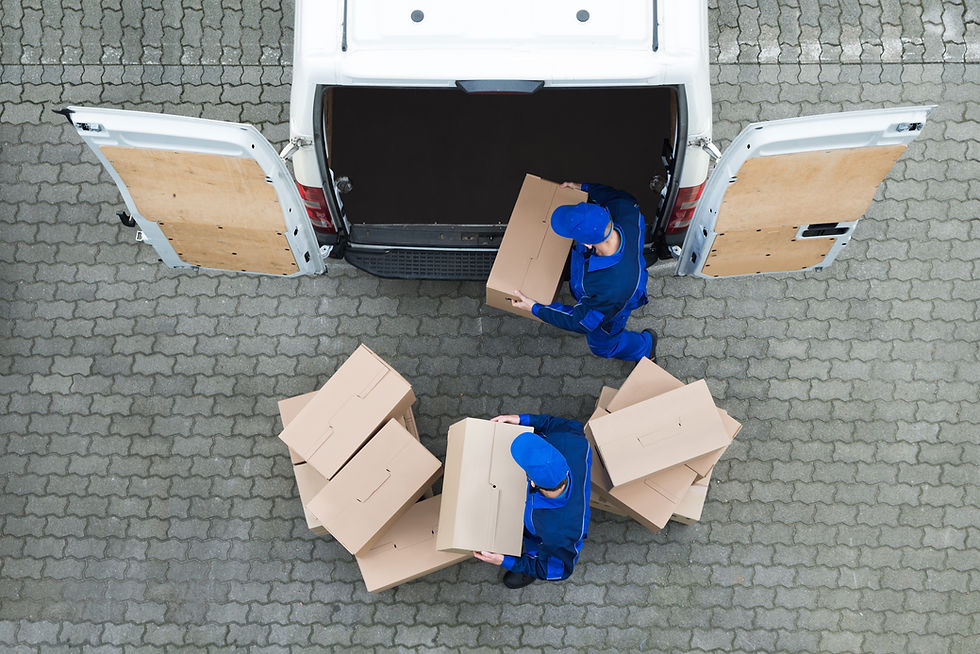Fulfillment by Amazon: Shipment Creation
- Nicholas

- Dec 30, 2018
- 5 min read

Creating a shipping plan is the final step in getting your products to an Amazon fulfillment center. This multi step process can be complicated if you are new to the process. The below blog aims to not only guide you through the process of creating a shipping plan but to also fill you in on key areas that require extra attention.
If you have yet to add any products to your inventory please visit our post
Without further ado, let’s get started.
Shipment Creation
When creating a shipment we first need to access our product inventory. To do so, hover over the Inventory drop down and select Manage FBA Inventory. This will take you to your FBA inventory page. This page will be populated with every product you have added.

Once here, determine which product you would like to send into Amazon. Once you have done so click the box to the left of the product and above the header click on “Action on # Selected”.

Next, select “Send/Replenish Inventory.

Send and Replenish Inventory
Selecting this will take you to the Send/Replenish Inventory page. Here you will select whether you would like to create a new shipping plan or add to an existing shipping plan, you can select the address these units are shipping from, and you will select the package type, which will almost always be Case-Packed Products. From here you will Continue to Shipping Plan.

Set Quantity
Set Quantity is the first step in shipment creation. You will need to let Amazon know how many products are in your current shipment. In this example we are only sending in one product but you may send in multiple at one time. Fill in the number of units per case and number of cases being sent.
The information required tab will let you know if Amazon is missing vital information, such as product weight or dimensions, and will not let you advance past this screen until those items are complete. When filling out the information required or removal required tabs make sure your information is correct as this can impact fees down the line.
Once finished click continue.

Note: All images have been edited to remove sensitive address and product information.
Prepare Products
Next, Amazon will require you to let them know who will be prepping the product. Please refer back to our prep and shipping requirements post if you are unsure if your product needs prepping. Amazon will also let you know what type of prep a product needs in the “Prep Required” and “Prep may be Required” tabs.
If you would like Amazon to prep your items you may select “Amazon” in the Who Preps dropdown. However, this will incur additional prep fees. These fees are reasonable and can save you time but at Teal Management we feel that most prep should be done in house to reduce risk of error. However, who completes the prep process is completely up to you.
Once finished click continue.

Note: All images have been edited to remove sensitive address and product information.
Label Products
All products must have a barcode. If your product is eligible for tracking with the manufacturer barcode, you don’t need to print and apply Amazon labels to your items. If you product is not eligible, then it must have an Amazon barcode.
To print and apply Amazon barcode labels yourself, select “Merchant” in the “Who Labels?” dropdown menu and click “Print labels for this page.”. Or, you can choose to have Amazon do this for a fee by selecting “Amazon” under “Who labels?”.
Labeling is important as this is how Amazon tracks what products are flowing into their fulfillment centers and into your inventory.
Once finished click continue.

Note: All images have been edited to remove sensitive address and product information.
Review Shipment
Review shipments is the final step before the actual creation of your shipment. At this point Amazon will show you the final destination(s) of your shipment and the number of items going to each location. It can be painful to ship to multiple locations at once so Amazon does offer a service called “Inventory Placement”. By activating this service it will force all your products to be shipped to one location but, this service can be costly for large or heavy items.
Once you have reviewed this page and are sure you would like to create a shipment click Approve and Continue. It is important to be sure your shipment is ready to go as Amazon does penalize your account if you delete too many created shipments.

Note: All images have been edited to remove sensitive address and product information.
Prepare Shipment
The prepare shipment tab is the final step before completing your shipment. This tab will contain important information such as Ship From location, Ship To location, Shipment ID, and Amazon Reference Number. The shipment status in the top right also shows you the current status of your shipment from “Working” to “In-Transit” to “Received” and finally “Closed”.
Once you have confirmed the shipping locations are correct you can choose which type of shipping service you wish to use. For smaller shipments using Small Parcel Delivery is typically best. This service will generate prepaid shipping labels for you to apply to your outgoing cases. You can also select LTL shipment services. By selecting Amazon partnered carriers you access cheap shipping options from a variety of carriers.

Once you have selected your shipping service you need to let Amazon know the shipment packing information. This includes a confirmation of the units being shipped under “Shipment Contents” (information in image below has been edited out to preserve privacy), the ability to edit the number of units in each box, the number of boxes being sent, and the shipping weight and dimensions. Once you have completed this section click Confirm.

This final step is confirming the shipping charge and printing your shipping labels. The below example shows a small parcel delivery confirmation. If you had chosen LTL there would be a section to include pallet weight and dimensions as well as a confirmation of carrier selected and a pickup date. It’s important to note that SPD charges can be voided up to 24 hours after a shipment is booked but LTL shipments must be voided with 1 hours of booking.

Summary
The shipment creation process can be one of the most difficult in getting your products to Amazon. Errors can occur, but if you are diligent with your shipments they will be rare. After your units have been shipped it’s important to monitor that they arrive and are received in full. Check out our post on Inventory Management to see how you can ensure your products make it to your inventory.
If you still feel that you need help with your Amazon activities reach out to Teal Management below to setup a free consultation.




Comments